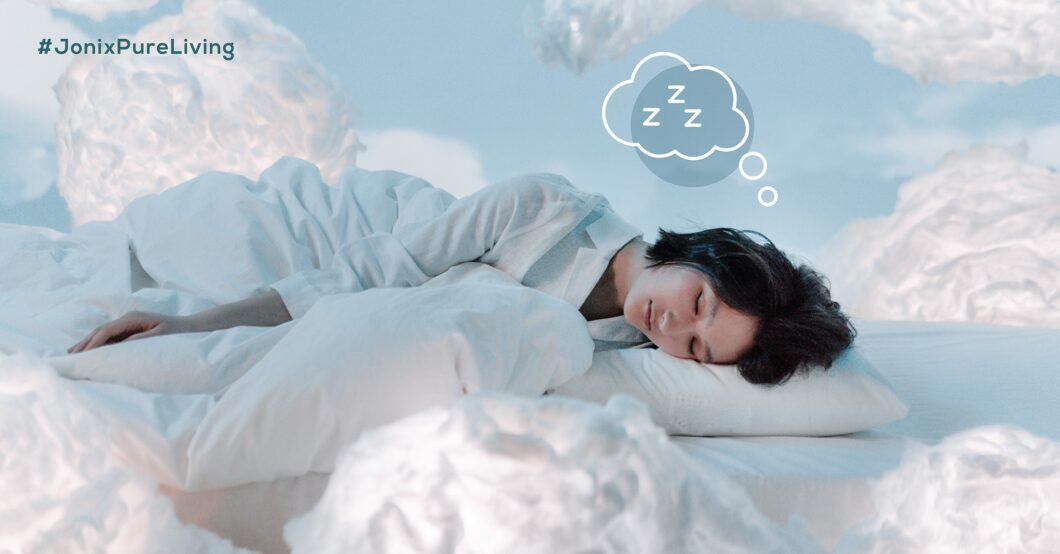It is not always easy to realize that you suffer from sleep apnea: you feel you are not sleeping good and you think of a thousand reasons such as digestion, stress, anxiety. It’s tough waking up always tired, with a sore head and the sense of not having really rested. It shouldn’t be overlooked because you could suffer from sleep disorders, including sleep apnea.
What you will find in this article:
What is sleep apnea?
Apnea is the temporary interruption of breathing. Although there are several types of apneas, the term “sleep apnea” usually refers to obstructive sleep apnea syndrome (OSAS) during which a person stops breathing for a few seconds because of a temporary block of the airways in the throat. In people with OSAS, this can also occur many hundreds of times during sleep in a single night.
But why does this happen? Be aware that when we sleep, our muscles relax and, in some people, the relaxed tongue and throat muscles can cause a narrowing of the airways, which affects breathing and can temporarily stop it. If this happens, the brain causes a brief partial awakening, which reopens the airways and resumes breathing. Repeated awakenings during the night can seriously affect sleep quality, leading to excessive daytime sleepiness.
Relieve sleep apnea with breathing
Recent academic studies show that sleep apnea is often the result of poor breathing control while awake and during slumber.
Bad habits and breathing control can be improved through specific breathing exercises practiced throughout the day, which will provide long-term benefits to not only relieve sleep apnea but also other respiratory problems such as asthma. Adequate breathing exercises can also help in managing conditions such as panic attacks and anxiety (we discussed also here how to relieve these conditions with breathing).
Doing breathing exercises during the day can help you breathe through your nose at night.
As a first exercise we propose alternating nostril breathing: with the mouth closed, inhale deeply through the nose. With one finger, block one nostril. Exhale through the open nostril, then inhale. Block the other nostril, then exhale and inhale through the open nostril. Repeat 10 or more times.
Some yoga poses can also help manage sleep apnea and difficulties breathing at night. Here are two useful positions to prepare the body for sleep.
Legs on the wall: Lie on the ground on your back, raise your legs to 90 degrees and lean them against the wall, so that your body forms an L-shaped pose. Relax in this position and hold it for at least 30 seconds, breathe through the nose slowly and stay focused on your breath.
Corpse Position: Lie on the ground on your back with your legs straight, arms at your sides and palms facing up. Breathe slowly, focusing on your breath as you inhale and exhale.
Prepare your bedroom for a good night’s sleep
Some tips for creating an environment perfect to rest
- Eliminate distractions
Keep your watch, television, diary and anything else that might create anxious thoughts away from your bed and eyes. - Prepare your bed
Wear loose-fitting, breathable, natural-fabrics sleepwear. Make sure the pillow and mattress are as comfortable as possible. - Keep technology away
From phones to e-readers and tablets: Limit the use of technology before bedtime, especially the hour prior to sleeping. - Associate your bedroom with sleep
Avoid turning your bedroom into an office or activity room. Keep your bedroom for sleep, coziness and relaxation. - Allow yourself to be sleepy
Be patient with yourself. If staying awake in bed makes you restless, get out of the bedroom and do something relaxing until you feel sleepy, then tuck back in and try again. - Keep your bedroom cool, quiet and dark
The right atmosphere can help you fall asleep. Try earplugs, sleep masks, or a white noise machine to reduce background noise. - Make your room a healthy environment
Dust, stale air, humidity or excessive dryness prevent proper breathing and therefore proper rest. Make sure that your room is always clean, and free of dust and that you breathe fresh, light, fragrance-free air. You can keep your Cube on for a couple of hours in your room before going to sleep: when you lie down you will be able to breathe better immediately!

